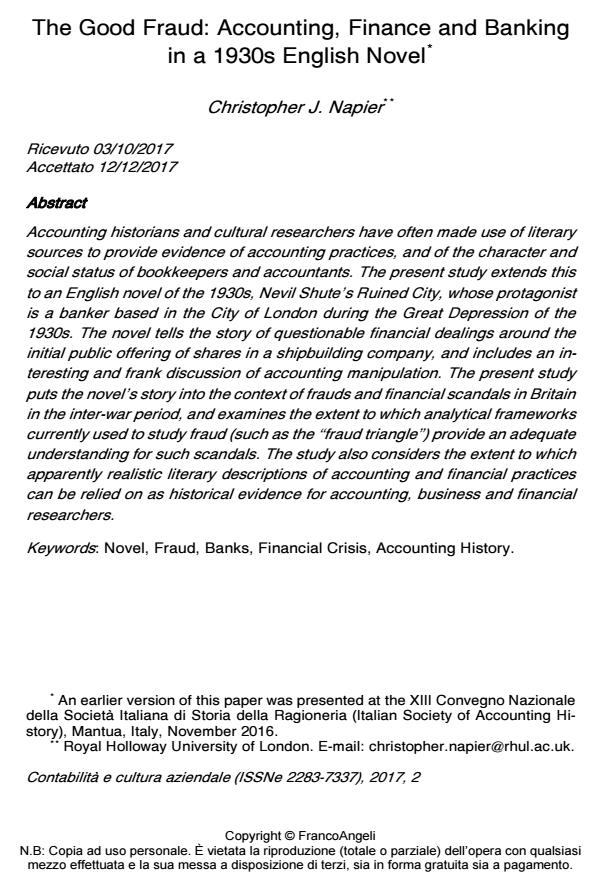The Good Fraud: Accounting, Finance and Banking in a 1930s English Novel
Titolo Rivista CONTABILITÀ E CULTURA AZIENDALE
Autori/Curatori Christopher J. Napier
Anno di pubblicazione 2017 Fascicolo 2017/2
Lingua Inglese Numero pagine 28 P. 43-70 Dimensione file 161 KB
DOI 10.3280/CCA2017-002003
Il DOI è il codice a barre della proprietà intellettuale: per saperne di più
clicca qui
Qui sotto puoi vedere in anteprima la prima pagina di questo articolo.
Se questo articolo ti interessa, lo puoi acquistare (e scaricare in formato pdf) seguendo le facili indicazioni per acquistare il download credit. Acquista Download Credits per scaricare questo Articolo in formato PDF

FrancoAngeli è membro della Publishers International Linking Association, Inc (PILA)associazione indipendente e non profit per facilitare (attraverso i servizi tecnologici implementati da CrossRef.org) l’accesso degli studiosi ai contenuti digitali nelle pubblicazioni professionali e scientifiche
Accounting historians and cultural researchers have often made use of literary sources to provide evidence of accounting practices, and of the character and social status of bookkeepers and accountants. The present study extends this to an English novel of the 1930s, Nevil Shute’s Ruined City, whose protagonist is a banker based in the City of London during the Great Depression of the 1930s. The novel tells the story of questionable financial dealings around the initial public offering of shares in a shipbuilding company, and includes an interesting and frank discussion of accounting manipulation. The present study puts the novel’s story into the context of frauds and financial scandals in Britain in the inter-war period, and examines the extent to which analytical frameworks currently used to study fraud (such as the "fraud triangle") provide an adequate understanding for such scandals. The study also considers the extent to which apparently realistic literary descriptions of accounting and financial practices can be relied on as historical evidence for accounting, business and financial researchers.
Parole chiave:Novel, Fraud, Banks, Financial Crisis, Accounting History.
- Governors and directors: Competing models of corporate governance Neeta Shah, Christopher J Napier, in Accounting History /2019 pp.338
DOI: 10.1177/1032373218800839
Christopher J. Napier, The Good Fraud: Accounting, Finance and Banking in a 1930s English Novel in "CONTABILITÀ E CULTURA AZIENDALE" 2/2017, pp 43-70, DOI: 10.3280/CCA2017-002003